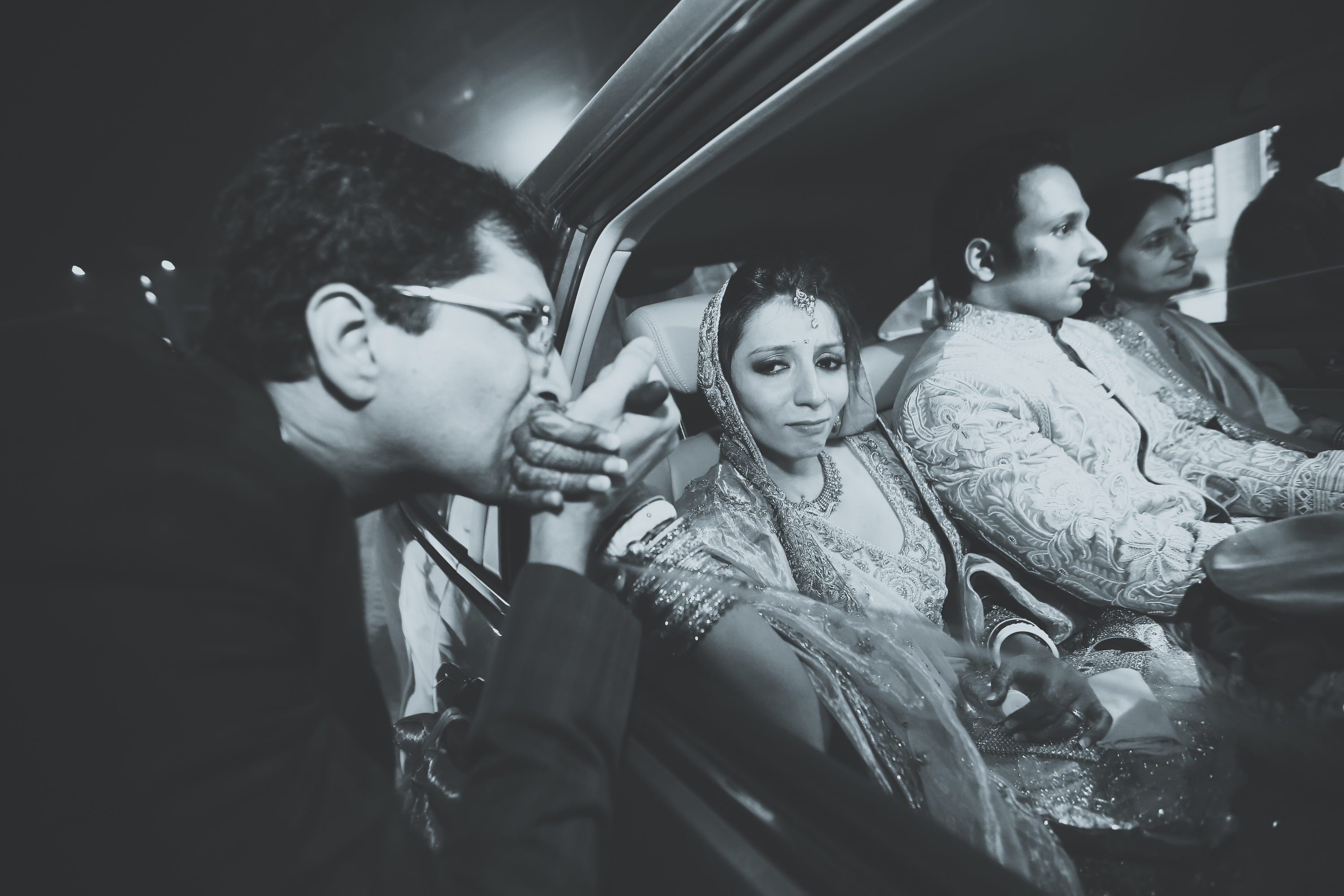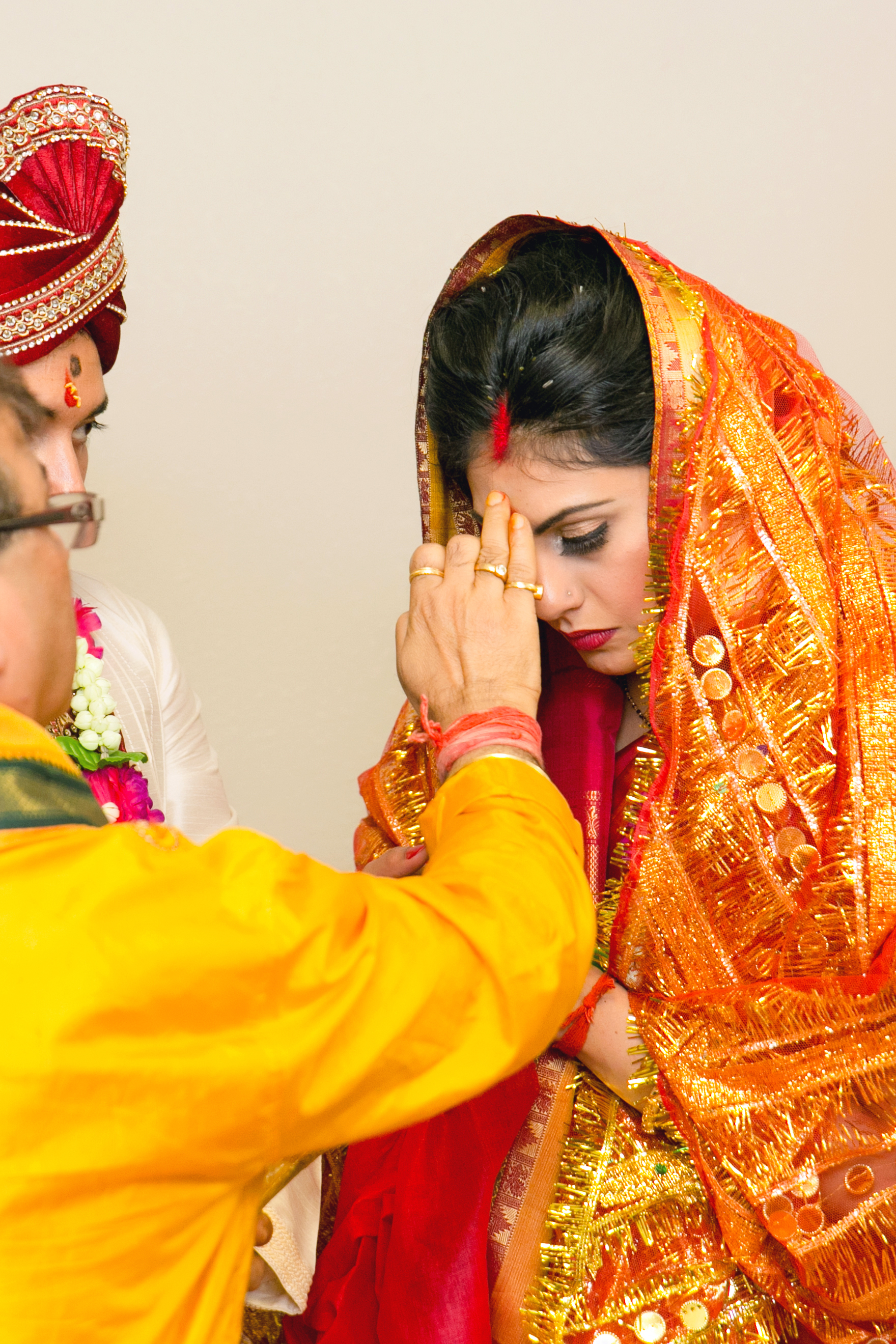After the ceremonies of the Sikh wedding, the bride and groom will often host a reception featuring food, dancing, and celebrations. In traditional custom, this was held as a lunch immediately following the Anand Karaj, but in modern times, a dinner reception with alcohol may also be hosted. The traditions that follow refer to the bride and groom’s departure from the wedding venue, into their newly married lives.
From Sukh & Abhishek’s Sikh Punjabi Wedding
Sadaa Suhagan
The bride will change out of her wedding clothes and into clothes that her groom’s family have gifted her, including jewelry. This represents her transition from one family to another. She then receives sadaa suhagan blessings, specific to the enjoyment of her married life.
Sadaa suhagan refers to her luck in passing from the world before her husband, so that she may never experience widowhood.
Reception
The wedding reception is hosted by the groom’s parents, who may invite a larger circle of friends, family, and colleague to attend who were not previously at the intimate wedding ceremony. Food, drinks, and dancing is enjoyed – especially bhangra.
From Bhavika & Sundip’s Wedding
The bride will wear the clothes gifted to her by her in-laws, as per custom, but modern Sikh weddings involve the bride selecting her own clothes for the reception – often glamorous lehengas or dresses.
The couple is seated in a place of importance and is not expected to move about too much to greet the guests, since the parents are the hosts. This is an occasion for the bride and groom to enjoy themselves after the religious ceremonies.
Doli
The bride takes her formal leave of her parents – which, in ancient times, involved her leaving her parent’s home where the Anand Karaj was held. Doli refers to the wooden structure of earlier times in which the bride was carried into her husband’s home.
From Nirali & Aman’s Wedding Vidai
The bride is blessed by her parents and relatives. She flings rice grains over her shoulder as she departs their home, symbolically wishing them joy behind her. Her married female relatives pour oil at the doorstep as she leaves, a rite of fertility.
One Sikh custom involves the bride playfully tapping an unmarried female relative with her kaleeras on her wrists – the folklore being that whoever is tapped will be married next.
Rose petals or flowers are tossed at the newlywed couple as they enter their doli-car to exit the venue. In modern times, the newlyweds and guests will simply move on to the reception after the wedding, so this ceremony is not practiced until after all wedding festivities have ended.
Arrival at Groom’s Home
The bride arrives at the groom’s residence in a doli-car, with her groom. She meets and greets the groom’s family waiting for her inside. Often, there is a welcoming aarti prayer and a showering of petals to accompany their entrance. Sweets are enjoyed, and lamps are lit as well.
From Raman & Amit’s Sikh Hindu Wedding
The bride is offered many gifts by her mother-in-law, such as clothing and jewelry, to enjoy in her newlywed life. This completes her transition into her new home and family, although other religious prayers may be said as she meets other relatives in the months following the wedding.
Check out the rest of the series here:
Introduction
Post-Wedding Traditions – You are here!




